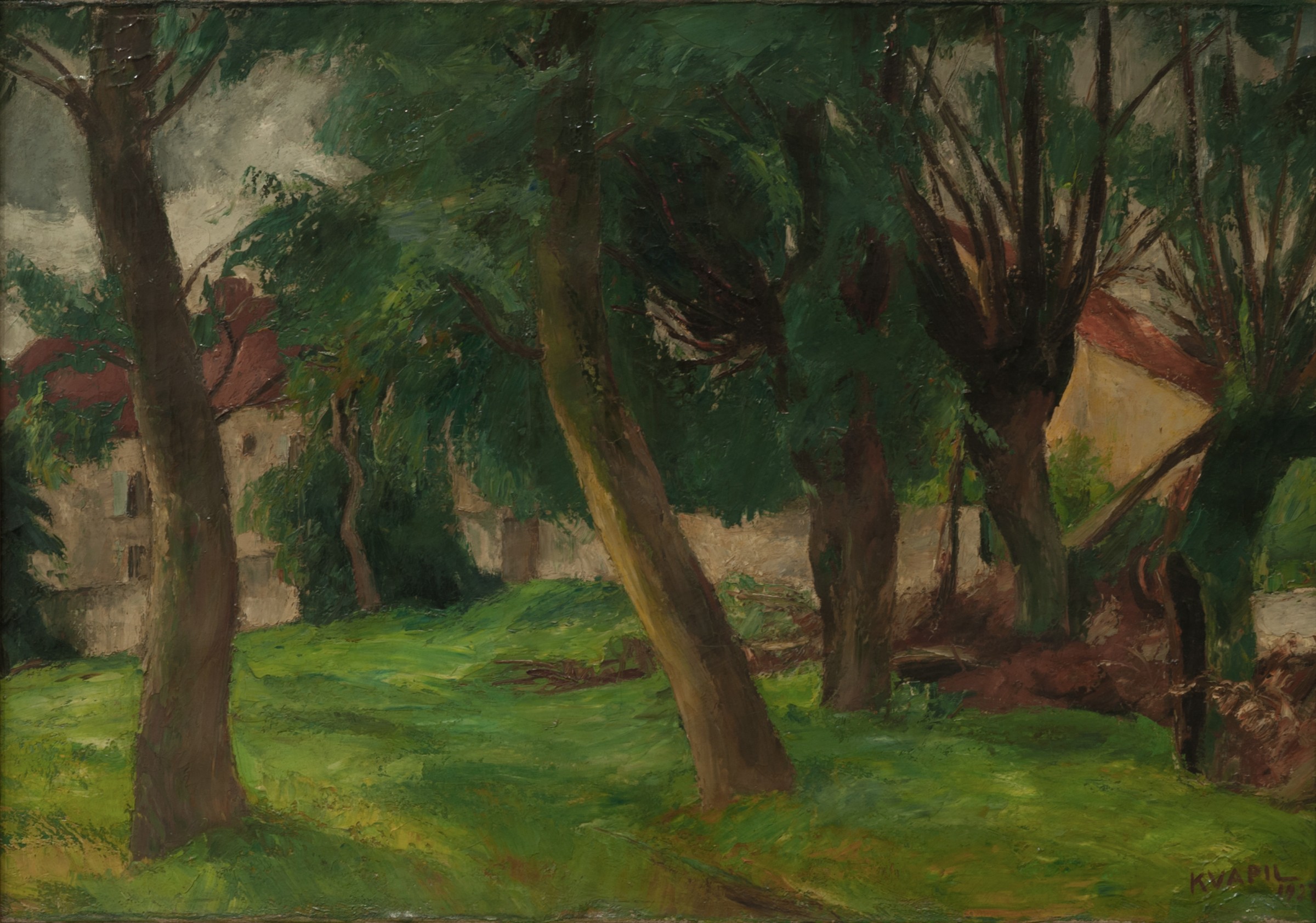Charles Kvapil
Anversa, 1884 - Parigi, 1958
Kvapil first approached Fauvism and then Cubism; in his works he noted his great love for nature, which was linked to the tradition of Flemish painting. Among the favorite subjects are models in the studio, very sensual nudes reminiscent of Flemish women, sometimes framed in front of a window from which you see Montmartre; still lifes of strong and powerful flowers, painted with a palette of joyful and vibrant colors.
A pupil of the Academy of Fine Arts in Antwerp, he moved very young to Paris, in the district of Montmartre. Here he leads a very uncomfortable bohemian life, but with a strong desire to live. Having to work to survive, Kvapil painted only in the evening, however, participating in several exhibitions: at the Salon d'Anvers in 1908, in Munich in 1911 and at the Brussels Triennale in 1914.
At the outbreak of war he left for the front, suspending the exhibitions. He revealed himself to the Parisian public only in 1920, when he participated in the Salon des Indépendants.
In 1923 he worked for the merchant Marcel Bernheim, then for Dalpeyrat in Limoges, where he exhibited mainly landscapes. In 1941, 1944 and 1951 he participated in the Salon d'Automne.
Kvapil first approached Fauvism and then Cubism; in his works he noted his great love for nature, which was linked to the tradition of Flemish painting. Among the favorite subjects are models in the studio, very sensual nudes reminiscent of Flemish women, sometimes framed in front of a window from which you see Montmartre; still lifes of strong and powerful flowers, painted with a palette of joyful and vibrant colors.
Museums:
Amsterdam, Museum of Fine Arts
Le Havre
Luxembourg
Paris, Musée d'Art Moderne de la Ville
Rouen
Saint-Etienne
Tunis, Tunisia
Bibliography:
E. Bénezit, Dictionnaire critique et documentaire des Peintres, Sculpteurs, Dessinateurs et Graveurs, Paris, Librairie Gründ, 1976 ; Dictionnaire de Peintres à Montmartre, Parigi, Editions André Roussard, 1999 ; M. Wolpert & J. Winter, Modern Figurative Paintings, The Paris Connection, Atglen, A Schiffer Book, 2004
© Charles Kvapil, by SIAE 2023
At the outbreak of war he left for the front, suspending the exhibitions. He revealed himself to the Parisian public only in 1920, when he participated in the Salon des Indépendants.
In 1923 he worked for the merchant Marcel Bernheim, then for Dalpeyrat in Limoges, where he exhibited mainly landscapes. In 1941, 1944 and 1951 he participated in the Salon d'Automne.
Kvapil first approached Fauvism and then Cubism; in his works he noted his great love for nature, which was linked to the tradition of Flemish painting. Among the favorite subjects are models in the studio, very sensual nudes reminiscent of Flemish women, sometimes framed in front of a window from which you see Montmartre; still lifes of strong and powerful flowers, painted with a palette of joyful and vibrant colors.
Museums:
Amsterdam, Museum of Fine Arts
Le Havre
Luxembourg
Paris, Musée d'Art Moderne de la Ville
Rouen
Saint-Etienne
Tunis, Tunisia
Bibliography:
E. Bénezit, Dictionnaire critique et documentaire des Peintres, Sculpteurs, Dessinateurs et Graveurs, Paris, Librairie Gründ, 1976 ; Dictionnaire de Peintres à Montmartre, Parigi, Editions André Roussard, 1999 ; M. Wolpert & J. Winter, Modern Figurative Paintings, The Paris Connection, Atglen, A Schiffer Book, 2004
© Charles Kvapil, by SIAE 2023
